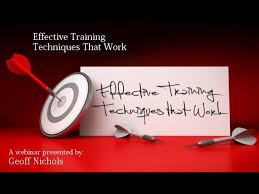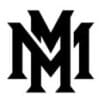Advanced Training Techniques: Unlocking Peak Performance and Maximizing Muscle Gains
For seasoned athletes and dedicated lifters, incorporating advanced training techniques can be the key to breaking through plateaus, stimulating greater hypertrophy, and achieving peak physical conditioning. These techniques are specifically designed to challenge muscles in new ways, promoting adaptations in strength, endurance, and muscle growth that traditional training alone can’t accomplish. Here’s an in-depth look at the most effective advanced training techniques and how to incorporate them into your workout routine for maximum results.
Why Use Advanced Training Techniques?
Once you’ve built a strong foundation in strength and muscle mass, your body adapts to standard training stimuli. Advanced techniques help break through these adaptation walls by introducing greater intensity, increasing time under tension, and recruiting more muscle fibers. The result is faster gains, improved endurance, and the ability to reach goals that were previously out of reach.
Top Advanced Training Techniques
Supersets and Giant Sets
Supersets involve performing two exercises back-to-back with no rest in between, typically targeting either the same muscle group (compound superset) or opposing muscle groups (antagonistic superset). Giant sets involve three or more exercises without rest.
- Benefits: Increases workout intensity, boosts calorie burn, and stimulates muscle growth and endurance.
- How to Perform: For example, a bicep curl followed by tricep extension (antagonistic superset) or bench press followed by push-ups (compound superset). For giant sets, string together three or more exercises in a circuit.

Pre-Exhaustion
Pre-exhaustion involves performing an isolation exercise to fatigue a muscle group before immediately moving to a compound exercise. This technique targets a specific muscle to ensure it is fully activated during the compound movement.
- Benefits: Enhances mind-muscle connection and isolates target muscles, particularly beneficial for stubborn or hard-to-activate areas.
- How to Perform: Perform a set of dumbbell flyes (isolation) to fatigue the chest, followed by a set of bench presses (compound) to further exhaust the chest and secondary muscles.
Post-Exhaustion
Similar to pre-exhaustion, post-exhaustion involves starting with a compound movement and following it with an isolation exercise. This approach allows you to use heavier weights for the compound exercise when you’re fresh and then thoroughly fatigue the muscle with an isolation move.
- Benefits: Maximizes muscular fatigue and growth by using both compound and isolation movements.
- How to Perform: Perform squats (compound), then immediately follow with leg extensions (isolation) to exhaust the quads fully.
Partial Reps
Partial reps target a specific range of motion, typically near the point of muscle failure, to maximize muscular tension and engage muscle fibers that might not be fully activated in full-range reps.
- Benefits: Strengthens specific portions of a lift, improves weak points, and increases time under tension.
- How to Perform: Perform bicep curls through only the top half of the motion once reaching failure in full reps, to continue activating the biceps without requiring the same weight.
Isometric Holds
Isometric holds involve pausing and holding a position at a particular point during an exercise, often the point of peak contraction or the most challenging part of the lift.
- Benefits: Enhances muscle endurance, strengthens tendons, and improves stability.
- How to Perform: Hold the bar in a bicep curl at the halfway point for 10-15 seconds after completing a set. For squats, pause at the bottom of the movement before coming back up.
BFR (Blood Flow Restriction) Training
BFR training uses bands or wraps to restrict blood flow partially to the working muscles, creating an intense workout stimulus even with lighter weights.
- Benefits: Promotes hypertrophy, improves muscular endurance, and reduces joint strain.
- How to Perform: Wrap a band above the target muscle, such as above the biceps, and perform 15-30 reps with a light weight. Use caution with BFR, limiting sessions to no more than a few times per week.
Compound Sets
Compound sets involve performing two exercises back-to-back for the same muscle group. Unlike supersets that might target opposing muscles, compound sets target the same area, fully exhausting it.
- Benefits: Increases local muscular endurance and forces the target muscle into deeper fatigue.
- How to Perform: Combine dumbbell curls with barbell curls for biceps or chest flyes with chest presses for the chest, completing each exercise without rest between.
21s
Popularized in bicep training, the 21s method breaks an exercise into three parts—partial reps in the bottom half of the range of motion, partial reps in the top half, and then full-range reps, totaling 21 reps.
- Benefits: Boosts muscle endurance, improves range of motion strength, and maximizes time under tension.
- How to Perform: For bicep curls, perform 7 reps in the bottom half, then 7 in the top half, and finally 7 full reps. This can also be adapted for other exercises like squats or shoulder presses.
Tri-Sets
Tri-sets involve performing three consecutive exercises for the same muscle group with no rest in between, pushing the muscle into deeper fatigue and optimizing the recruitment of different muscle fibers.
- Benefits: Accelerates muscle fatigue, increases calorie burn, and maximizes muscle recruitment.
- How to Perform: For the chest, you might combine incline presses, flat bench presses, and push-ups back-to-back. Rest after the tri-set, then repeat.
Contrast Training
Contrast training combines a heavy strength exercise with a lighter, explosive movement. This type of training maximizes muscle fiber recruitment and improves both power and strength.
- Benefits: Builds strength and power by activating fast-twitch muscle fibers and improving muscle response time.
- How to Perform: Pair a heavy squat with an explosive jump squat or a bench press with a set of plyometric push-ups.
Mechanical Drop Sets
This technique is similar to a drop set but instead of lowering the weight, you alter the position or grip to an easier variation of the same exercise. Mechanical drop sets allow you to push past failure without needing to change equipment.
- Benefits: Boosts muscular endurance and hypertrophy, adds variety, and maximizes time under tension.
- How to Perform: For shoulder presses, move from strict presses to push presses (using leg drive) once you reach failure with strict form.
Creating an Advanced Routine
Incorporating advanced techniques requires strategic planning to avoid overtraining and ensure sufficient recovery. Here are some tips:
- Rotate Techniques: Use one or two advanced techniques per session, and change techniques weekly or biweekly to avoid plateauing.
- Limit Advanced Techniques to Specific Sets: Apply these methods only to your last set of an exercise, as advanced techniques require more recovery.
- Prioritize Recovery: Advanced training requires more time for muscle recovery, so make sure to prioritize sleep, nutrition, and active recovery strategies.
Sample Advanced Workout with Technique Integration
Leg Day Example
- Squats (Contrast Training): 3 sets of 5 reps with heavy weight, followed by 5 jump squats
- Leg Press (Mechanical Drop Set): 3 sets of 10 reps, shifting to a slightly narrower stance after reaching failure
- Leg Extensions (21s): 3 sets of 7 bottom-half, 7 top-half, 7 full-range reps
- Walking Lunges (Isometric Holds): Pause at the bottom of each lunge for 2 seconds for 12 reps per leg
Advanced Training Tips
- Know Your Limits: Pushing to failure is important, but advanced techniques demand respect for your body’s limits to prevent injury.
- Use a Spotter: Many of these techniques are best performed with a spotter, especially when you’re lifting near your max weight.
- Stay Consistent: Incorporating advanced techniques consistently will yield results over time. Track your progress and adjust as needed.
Building a Better Foundation for Improved Performace
Advanced training techniques are powerful tools that can redefine your progress, helping you achieve muscle growth, strength, and conditioning that regular routines can’t match. Whether you’re employing pre-exhaustion, 21s, or mechanical drop sets, these techniques push your body beyond its usual limits, demanding new adaptations and pushing you toward peak performance. Take these tools to the gym, and unlock the next level of your training potential.
Thanks For Reading!

